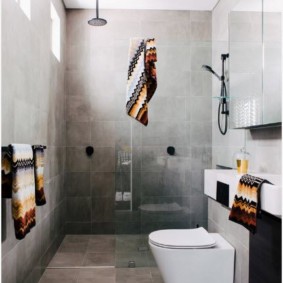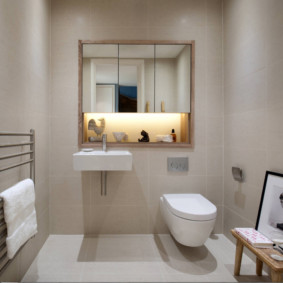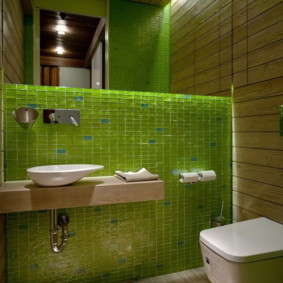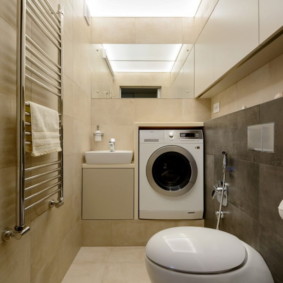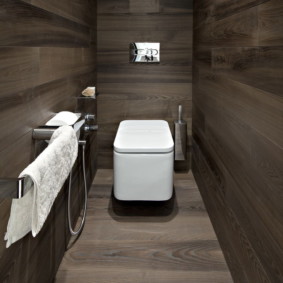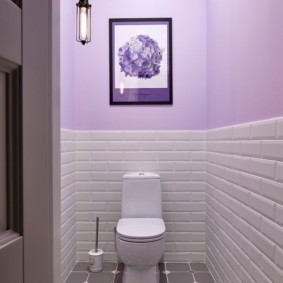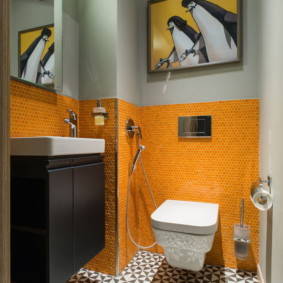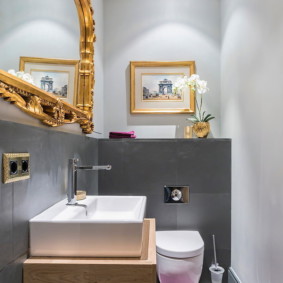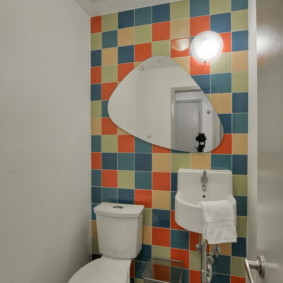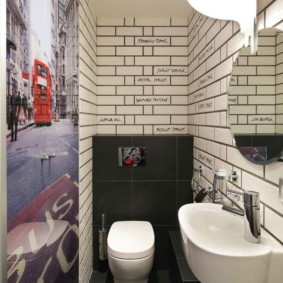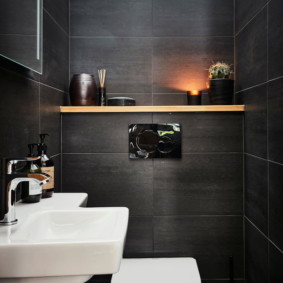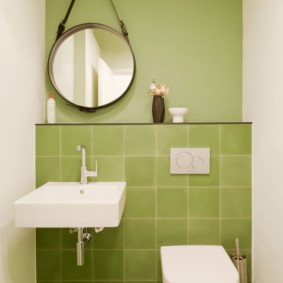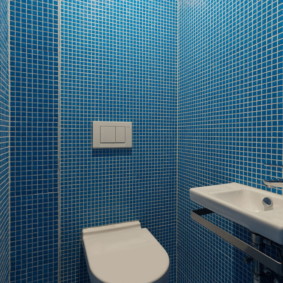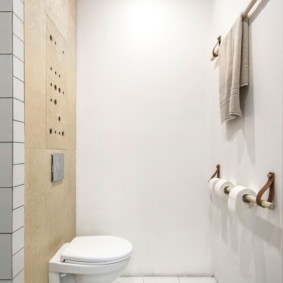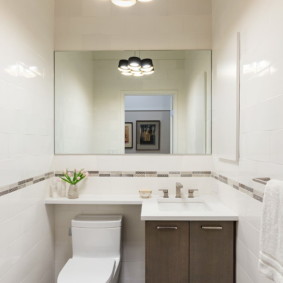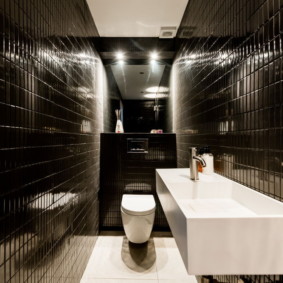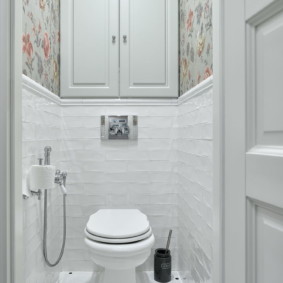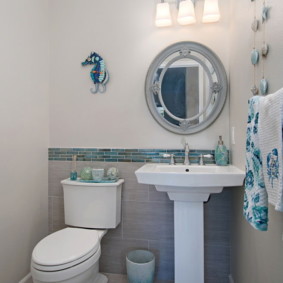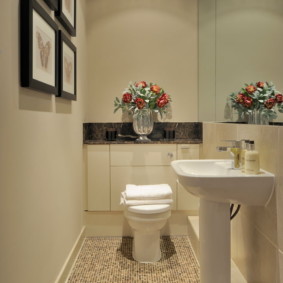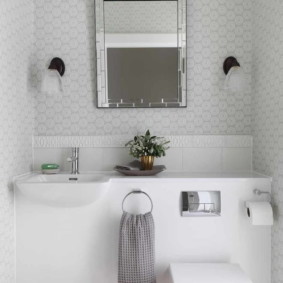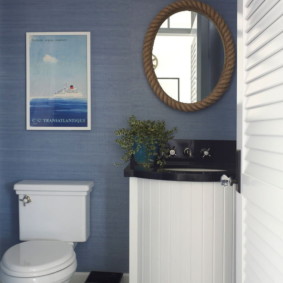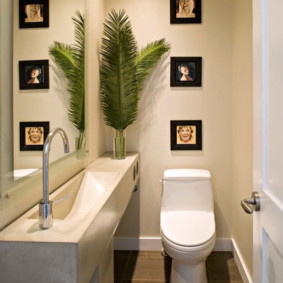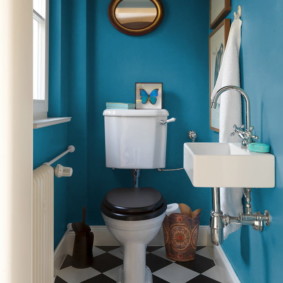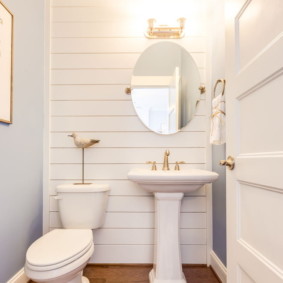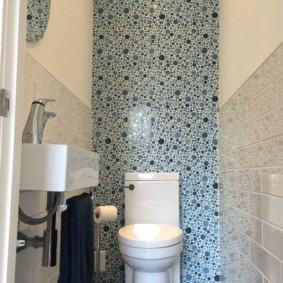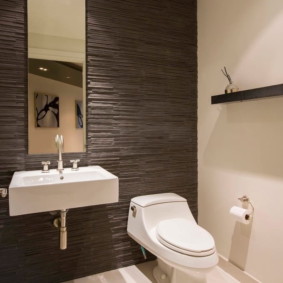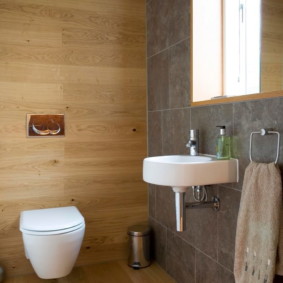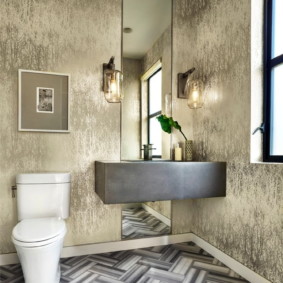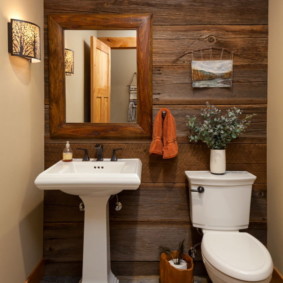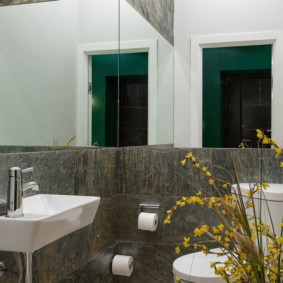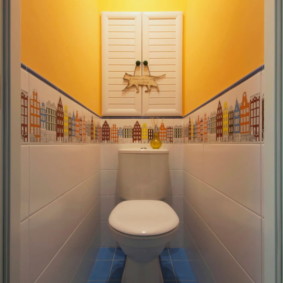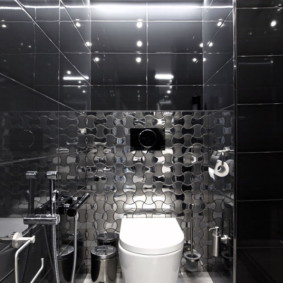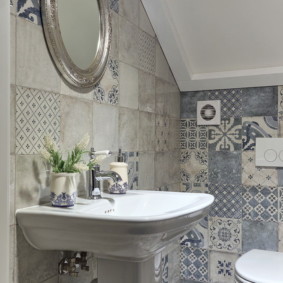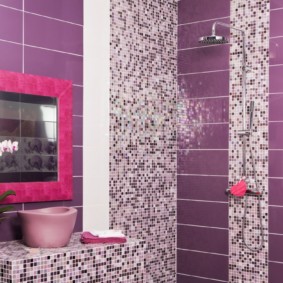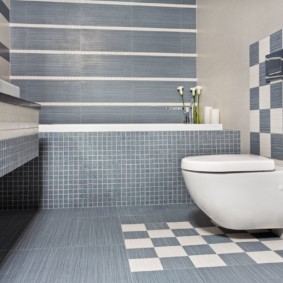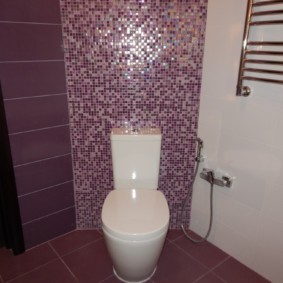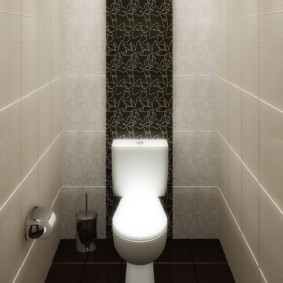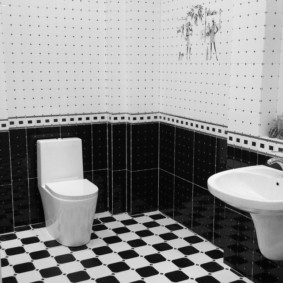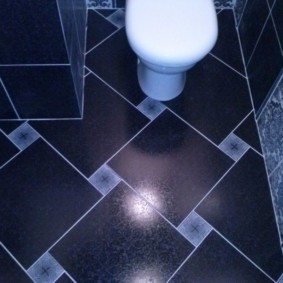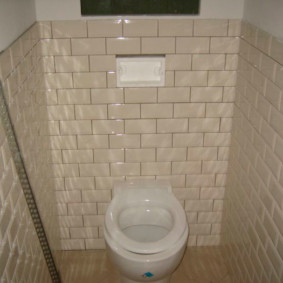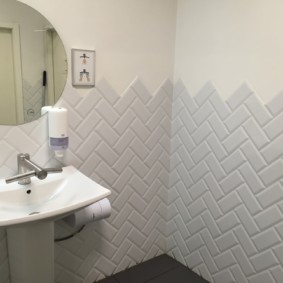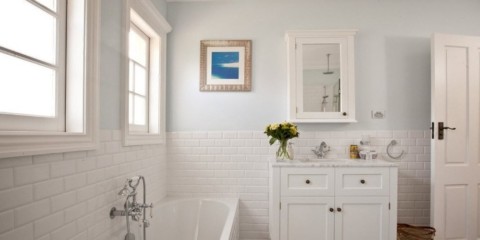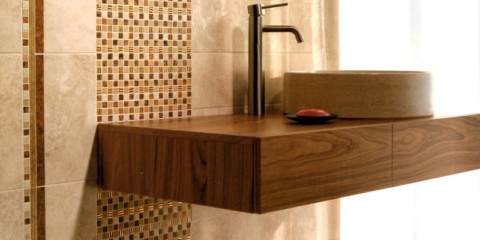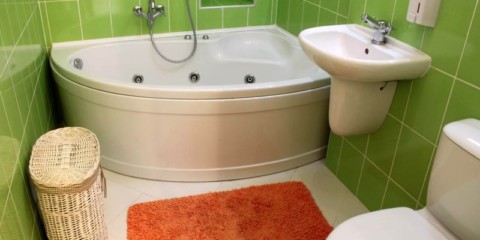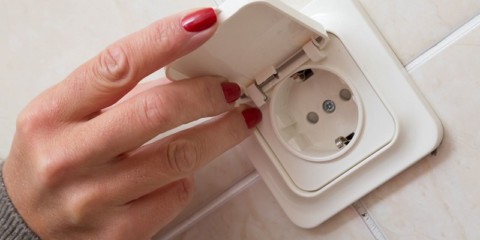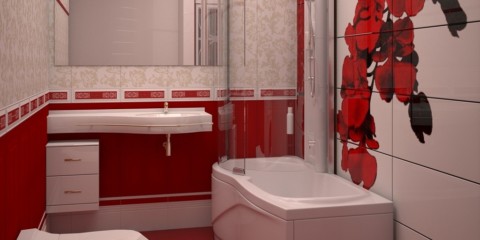 A bathroom
How to choose a design for a bathroom in Khrushchev?
A bathroom
How to choose a design for a bathroom in Khrushchev?
The toilet is the place where it is very important to maintain cleanliness and sterility. Walls and floors with tiles will be ideal. Photos of the repair of the toilet with tiles are given below in the article. To make a choice, you should study the characteristics and functions of finishing materials. This will allow you to carry out repairs quickly, efficiently and effectively.
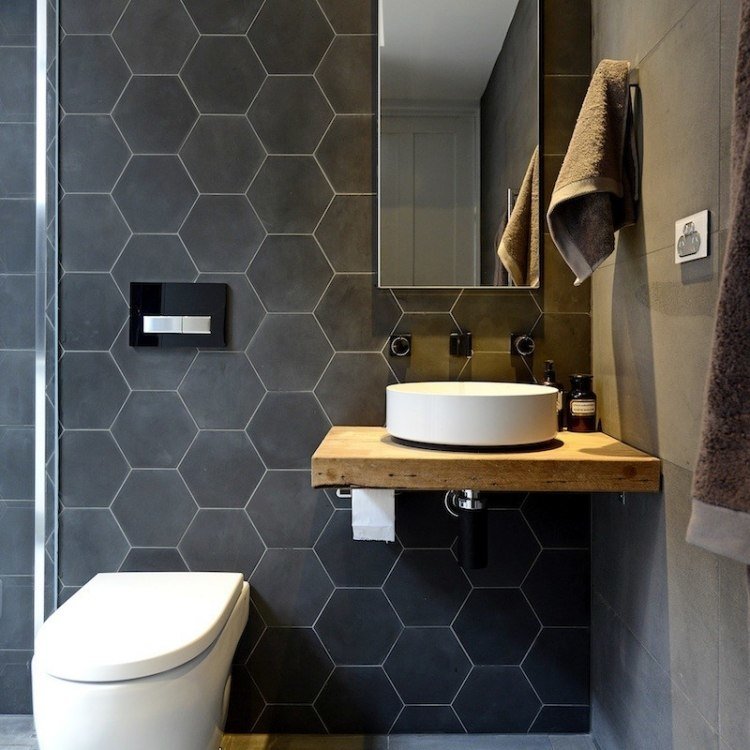
When choosing a tile for a toilet room, you should consider many nuances
Toilet Tile Design
Content
- Toilet Tile Design
- The main criteria that play a role in the design of the bathroom
- Features, advantages and disadvantages of toilet tiles
- Varieties of tiles and its features
- Tips for choosing tiles in a small toilet
- Choosing the shape and size of toilet tiles
- Combination and tile options
- Color and design solutions
- Nuances of the choice of materials
- What type of tile to choose in appearance and characteristics
- Video: unusual ideas for a regular bathroom
- Tile in the toilet - sample photos
In different houses and apartments, the bathroom has various sizes and layouts. It can be adjacent to the bathroom or separate. Not so long ago, when making repairs in the toilet, people did not think about the possibility of design solutions in the interior. The main task was to provide it with functionality. In the modern world, this position has changed. Increasingly, they began to resort to the help of professionals who develop beautiful and relevant projects for rooms even with very small quadrature. Here are photos of the options for finishing the toilet with tiles.
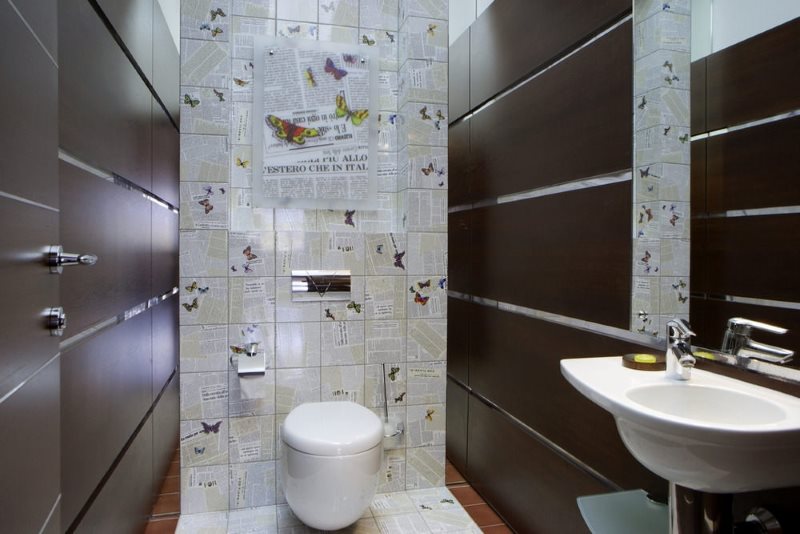
Tiles can be laid out completely all the walls of the toilet
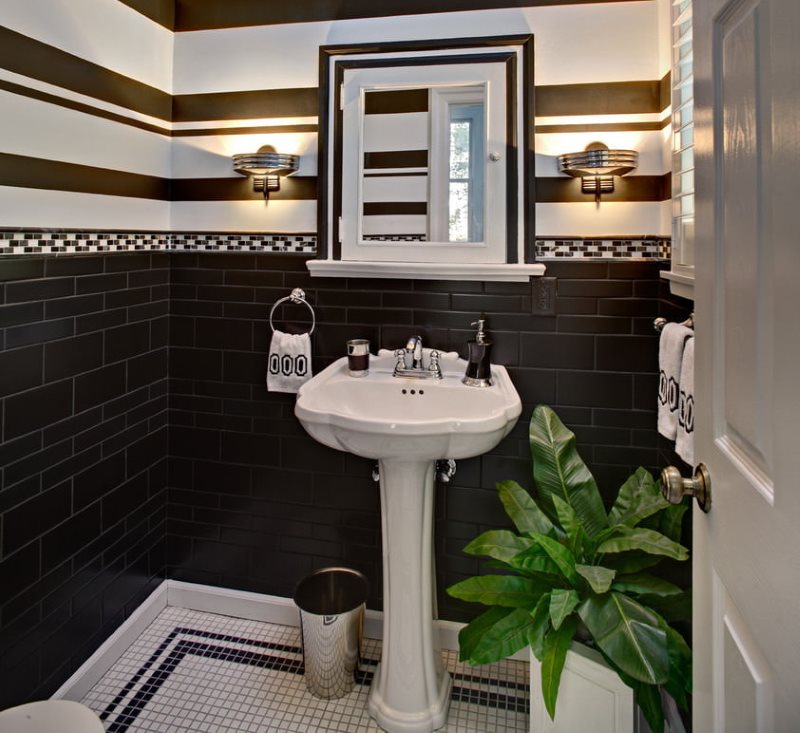
And you can use a combination of tiles with painting, wallpaper or panels
The main criteria that play a role in the design of the bathroom
- Room space and ceiling height.
- Layout. The bathroom can be square, rectangular, and possibly L-shaped.
- The overall style of the apartment. It is desirable that the toilet does not stand out from the general style of the living room, but rather harmoniously fit in there. In an apartment with a classic renovation, designed in bright colors, a bathroom decorated in flashy bright shades of modernity will not be appropriate.
- The presence of a window. If for apartments of small quadrature this phenomenon is not frequent, then for private houses it is rather the norm. The window makes the bathroom much brighter, which is important when choosing the color of the tile.
- Functionality. Before the repair, it is necessary to determine in advance the functional elements: shelves, bedside tables, hooks, dryers for towels, hands (for adjacent bathrooms), etc. Their number and location also plays a role in the design of the premises.
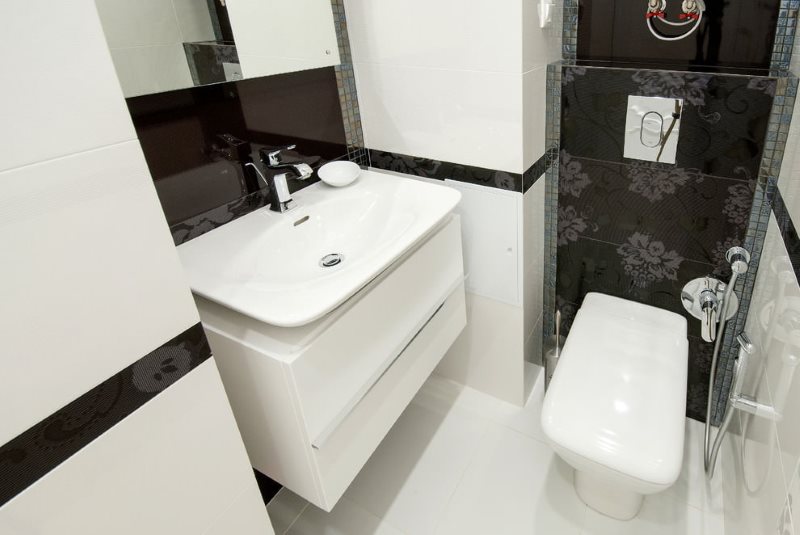
Organic interior of a compact toilet with snow-white sanitary ware and black decorative tiles
With an integrated approach, and taking into account the above criteria, the tile for the bathroom will be selected as soon as possible and without any problems. She will fit into the interior of the toilet perfectly and will delight all households.
Features, advantages and disadvantages of toilet tiles
Perhaps the tile is the most common finishing material used in the repair of the bathroom. Tile options for the design of the toilet can be seen in the photo. Its popularity is not accidental. It has a number of advantages, which we will familiarize with below.
- Tiles have a huge variety of sizes, textures and colors.
- The moisture resistance is high. Such an indicator is important when using it in the bathroom, since all kinds of water procedures are carried out regularly in it.
- Tiles come in many forms. Each of them has its own advantages. Read more in the article below.
- The service life is very long.
- Tile care is simple. Cleaning products do not worsen its condition and are easy to clean.
- The pattern does not lose its color and does not fade over time. Neither the clarity nor the brightness changes.
- With the right choice of tiles, the toilet takes on an irresistible appearance.
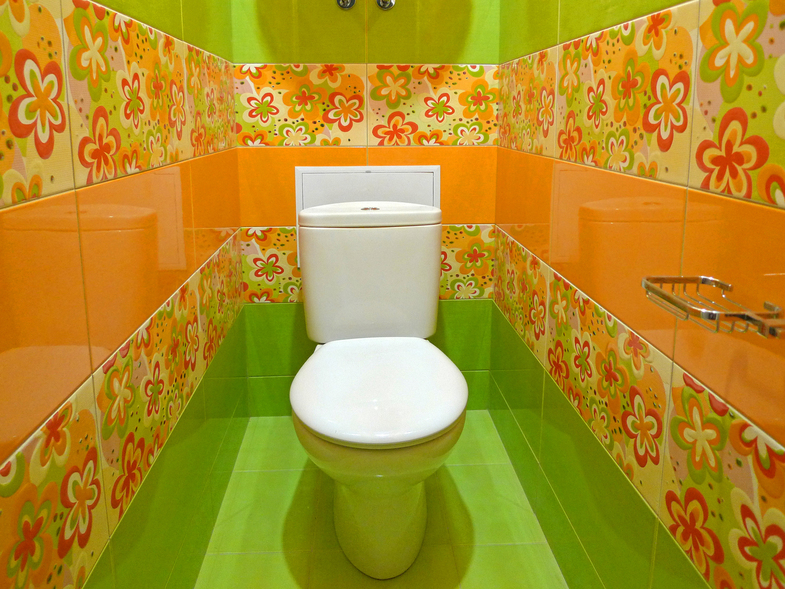
Ceramic coating reliably, durable and practically does not limit design fantasies
There are also disadvantages, but they are insignificant against the background of advantages.
- Putting tiles in the bathroom is not an easy task. It will not be easy for an ordinary person to cope. To do this, turn to professionals. Such services are not cheap pleasure, but the result is worth it!
- The surface trimmed with tiles has a huge number of joints. Over time, such places have the ability to darken, and even generally covered with mold. To avoid such events, you should choose a grout for high-quality joints. It is less vulnerable and will help to maintain the seams in proper quality.
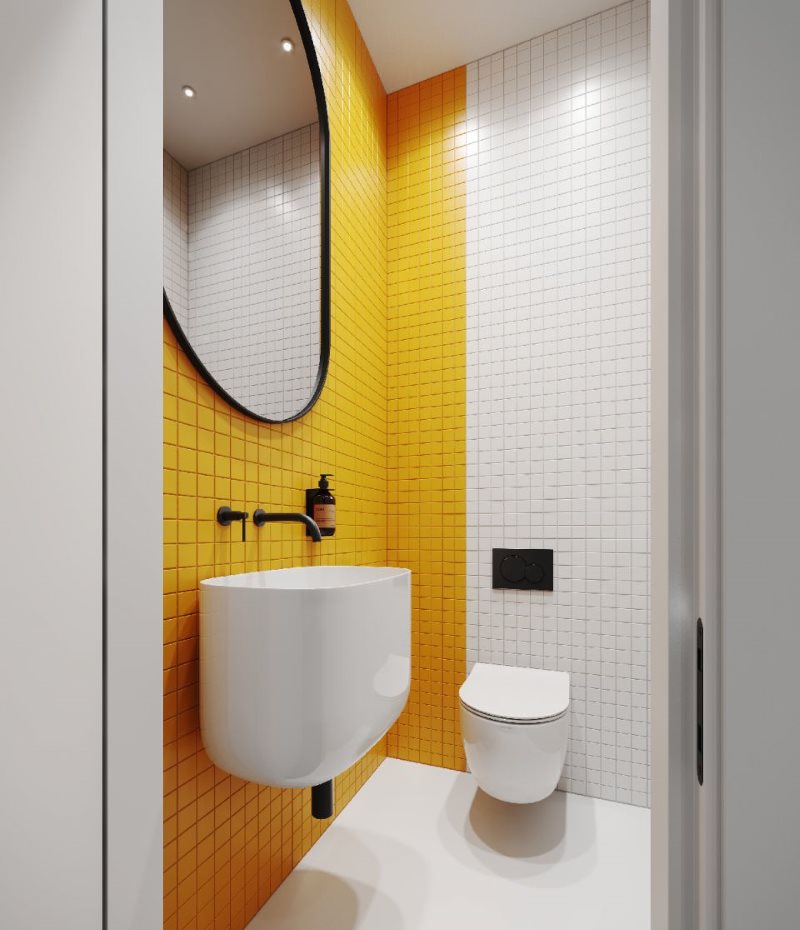
Using tiles of different colors, the space of the toilet room can be divided into functional zones
Varieties of tiles and its features
- Tile (ceramic tile). The advantages include strength, resistance to chemicals and high humidity. It is well cleared and has high dielectric properties. The downside is fragility to mechanical damage. Tile in the toilet design photo presented below.
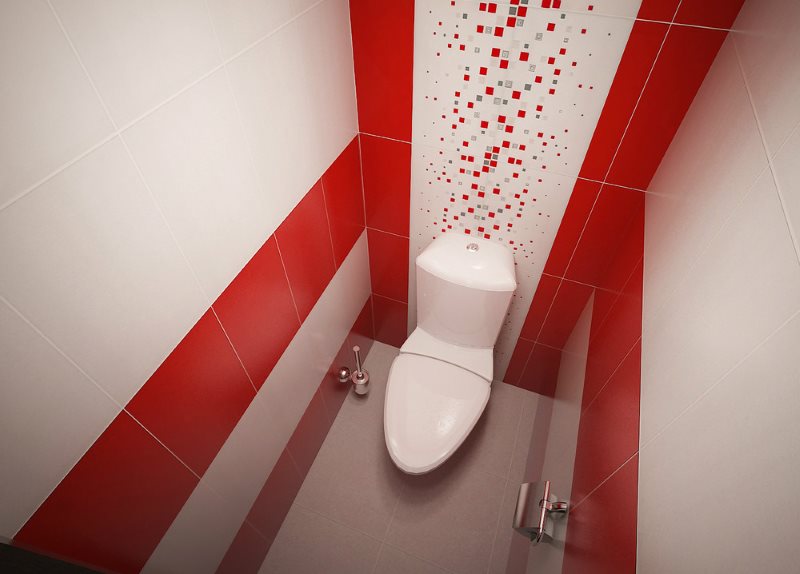
Ceramic tile is the most common option for wall and floor toilet
- Porcelain tile. Strength and wear resistance are much higher than that of tiles. Chips and cracks are not terrible for such material. The load that he is able to withstand is 500 kg per 1 sq. Km. cm, and even higher. It is used both for wall decoration and flooring. The disadvantages are heavy weight and slippery surface.
- Stone tiles. The material is eternal with high environmental qualities. It does not respond to dampness and humidity. Mold and fungus are not afraid of him. There is natural stone and artificial. The second is different in that it has less weight, it is easier to stack and it is inexpensive.
- Glass tile. It is used as an element of decor in the design of the interior of the bathroom. Glass happens:
- color;
- transparent;
- translucent;
- glossy;
- matte;
- invoice;
- smooth.
The effect of using glass tiles is impressive. Often a pattern is applied to it to create a unique style.
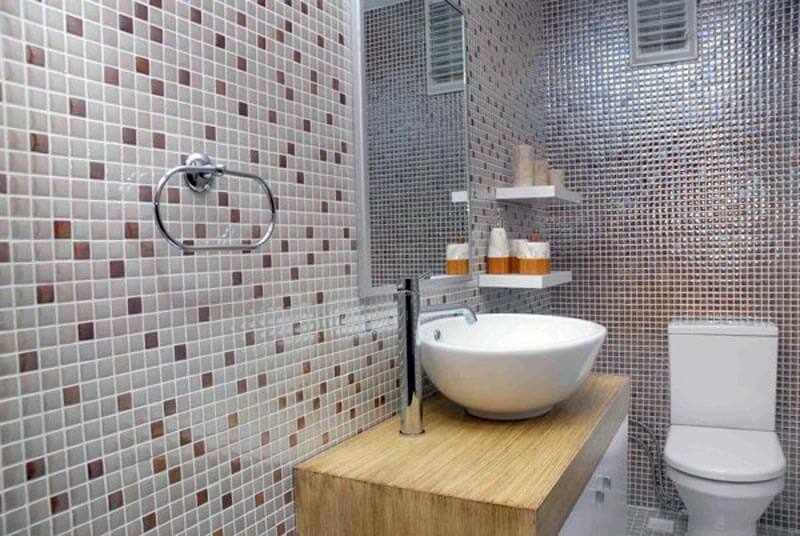
When decorating the walls of the bathroom, glass mosaic is most often used, which allows you to create original interior compositions
The life of the tile is not one dozen years. Due to such strength, it is possible to safely install furniture and household appliances on it.
Tips for choosing tiles in a small toilet
Tile for a small toilet should be selected carefully, since the main task is to visually increase the room. First of all, pay attention to color. The main tons of course need light, but bright spots are allowed to create a colorful interior, which will become an accent in the interior.
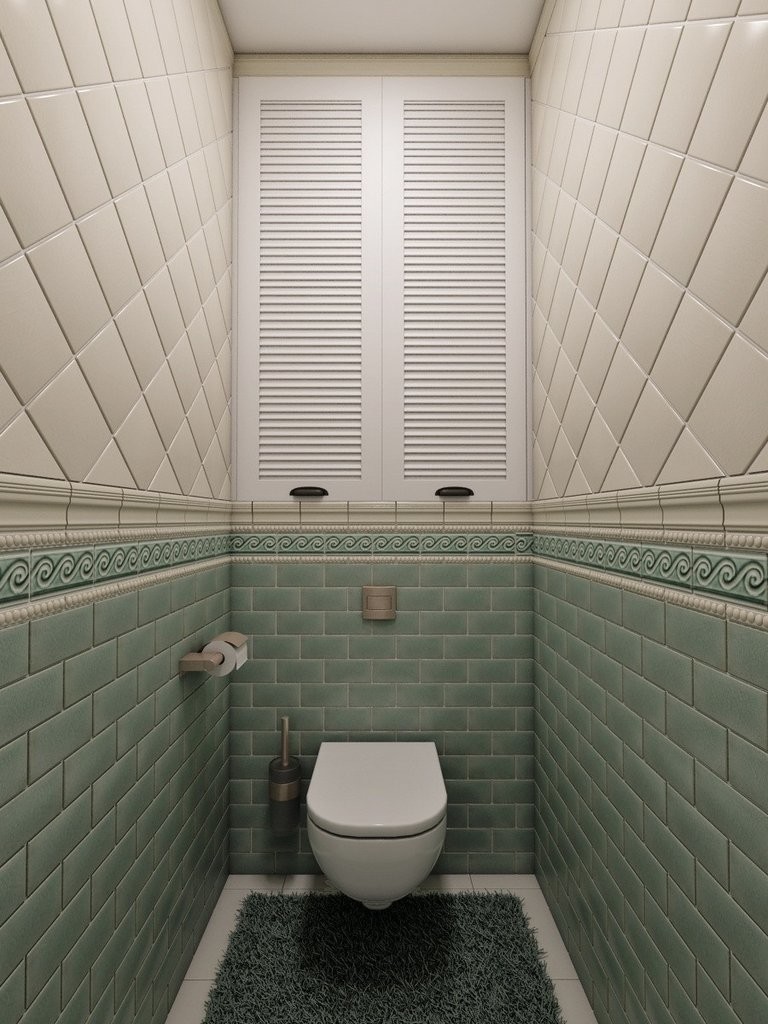
Small dressing room needs to be adjusted for visual perception of space
For a rectangular bathroom there are design tricks. So, a short wall can be made bright and decorated with a wide strip of contrasting color. This will visually lengthen the short walls. Rectangular tiles can be laid in two ways - vertical and horizontal. The second method is ideal for a small toilet.

If the toilet has a low ceiling, it is better to buy a rectangular tile and lay it vertically
In order to expand the dimensions of the bathroom, there is a mosaic - such is the use of ceramic elements for decoration. Diagonal laying is good for flooring. Creating a border on the ceiling or at the level of the plinth will make the space wider.
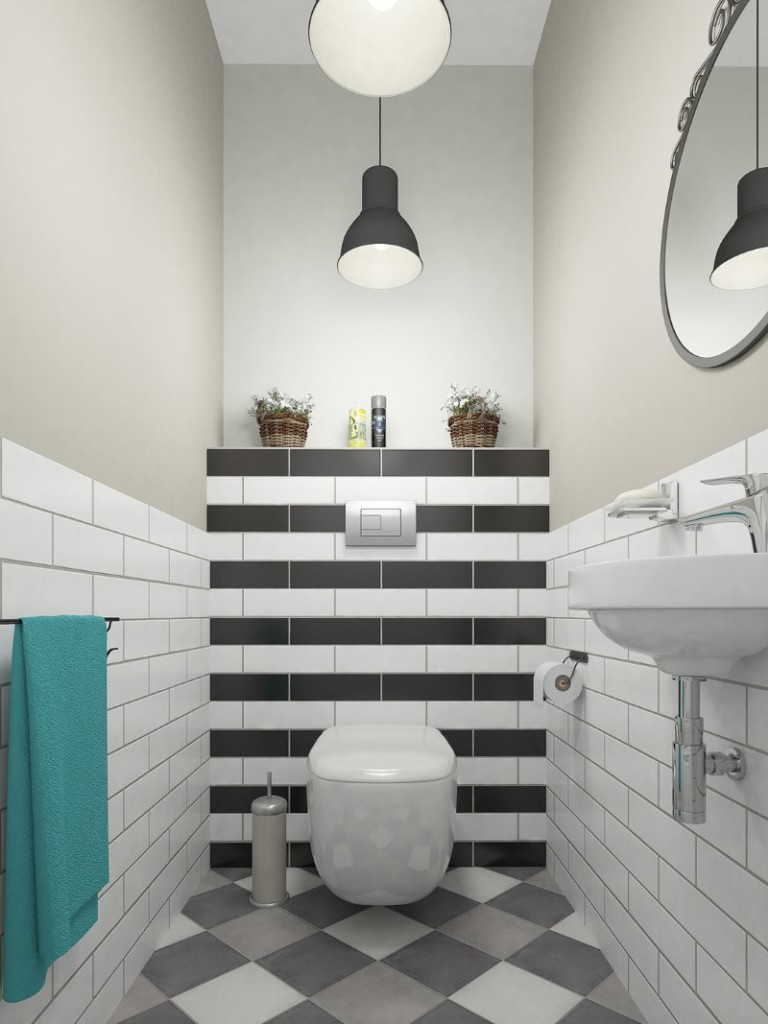
Horizontal laying of a rectangular tile will make the space visually wider
The tiles on the floor in a small toilet should be large on the contrary. Color may be darker than for walls, but not stand out. It is important that they combine into a single whole.
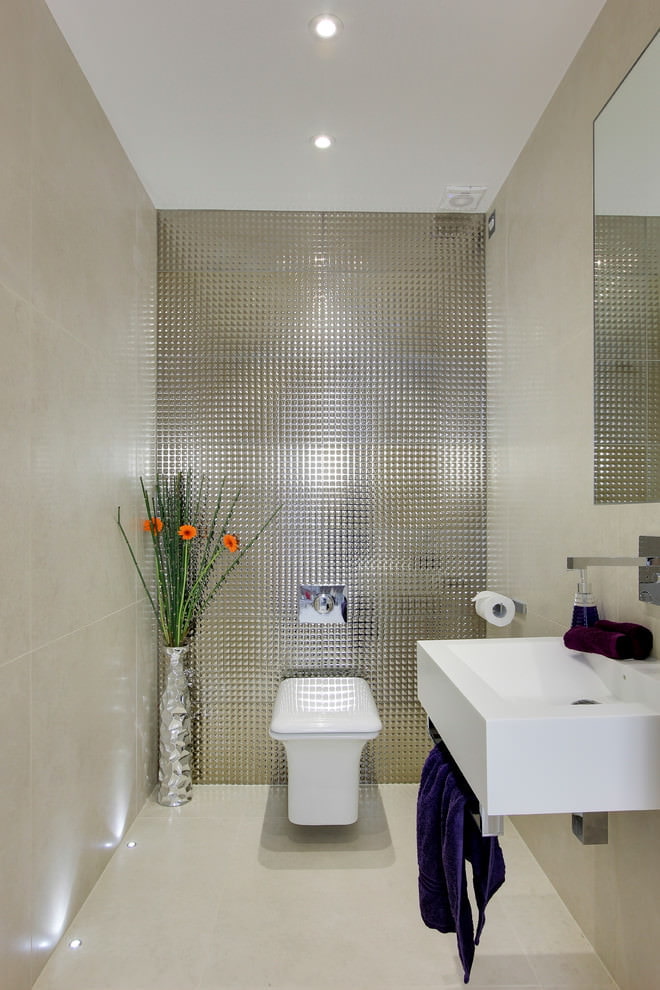
With glossy walls, the floor should be matte, and vice versa
Choosing the shape and size of toilet tiles
Cladding tiles have many standard sizes. If you plan to take this into account when planning the repair, you don’t have to trim it in the end, which means that the appearance and integrity of the design idea will be preserved.
The sizes of wall tiles are the most diverse. It starts from 10 by 10 cm, then 20 by 10, 15 by 15, 20 by 20 and up to 30 by 60 cm.
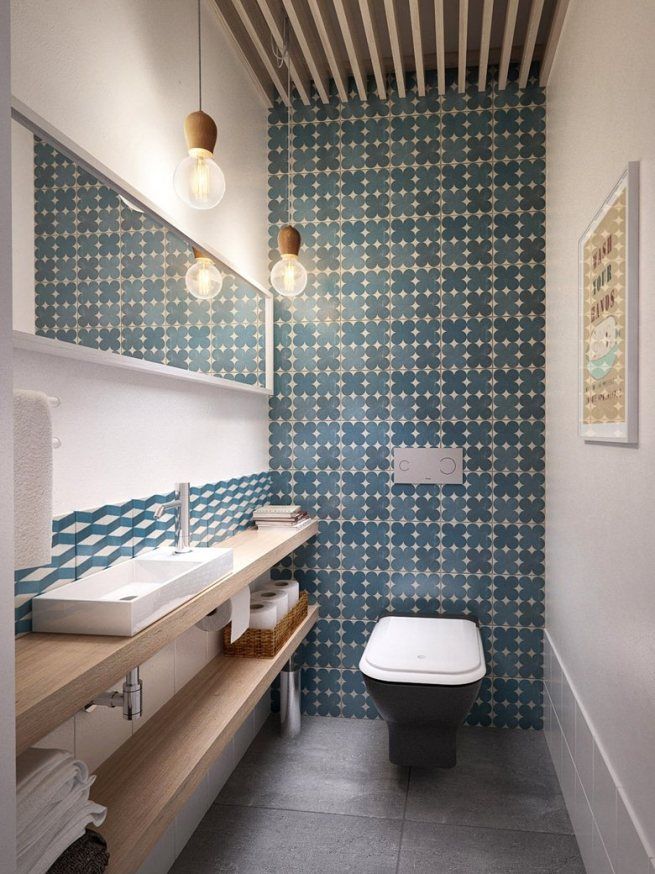
In a small bathroom, it is desirable to use large tiles, small here may look uncomfortable
It is customary to use square or rectangular tiles for the floor, but there are also non-standard shapes, such as triangles, octagons, etc. They can be used as decorative inserts.
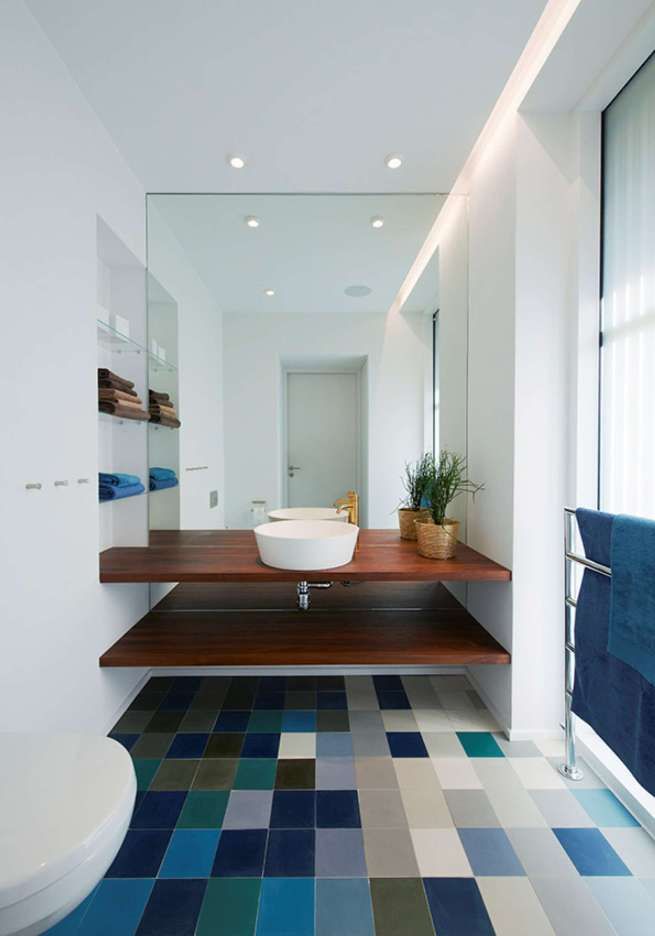
In a room of a large area, tiles of any size look good - from fragments and mosaics to large-format products
The square tile has standard side sizes: 10, 15, 20, 25,30,33 and 60 cm. As for the rectangular tile: 20 by 10, 20 by 5, 30 by 15, 30 by 20 and 40 by 30 cm.
In the process of tile production, clay has the ability to taper or expand. So the actual size of the tile may not coincide with the declared manufacturer. The error is permissible within 5-7 mm, and this should be taken into account.
Combination and tile options
The combination of colors is, firstly, the originality and originality of the interior, and secondly - the ability to create comfort and correct the imperfections of the room.
- Layout by the type of wall panel. A universal option, adds volume to the room, but at the same time slightly reduces it. The scheme is as follows: from the floor and a third of the height of the wall - dark tiles, then to the ceiling - light. At the junction, a decorative border is most often used.

Chic classic-style toilet room with malachite bottom trim and gilded decor
- Horizontal stripes. They can be of different widths: from narrow, created by decorative elements, to wide, 2 tiles thick. Their location may be different: on the lower third of the wall, under the ceiling or in the middle. Their number also varies, and not necessarily the same color.
- Vertical stripes. It is used to increase the height and makes the room narrow in appearance. The stripes can be narrow and wide, and in length:
- a strip from the ceiling to the floor;
- a strip not reaching the floor - hanging;
- a strip not reaching the ceiling - breaking off;
- several strips of different lengths at different heights.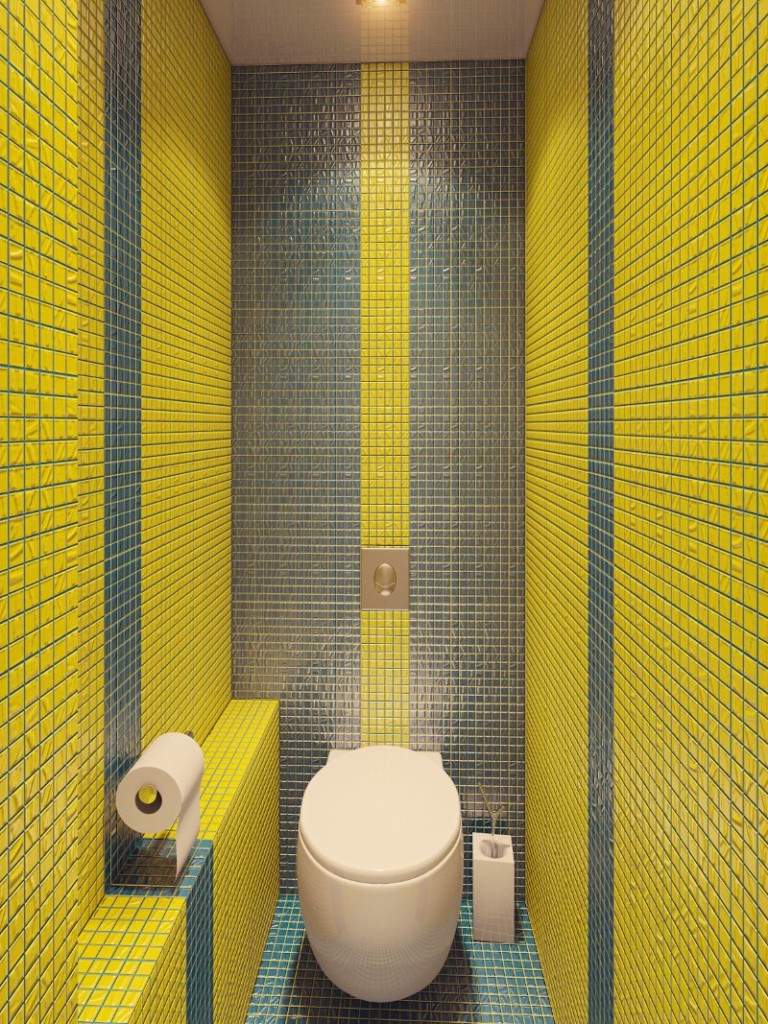
Mosaic stripes of fine tiles in contrasting colors
- Paul with a border. Floor tiles partially go to the wall. The height is usually 1-2 tiles. A simple scheme to expand the space.
- Accent fragments. A popular layout these days. Most of the surface is made with background tiles, and functional areas are highlighted using decorative or contrasting. For small rooms it is not recommended not to create imbalances.
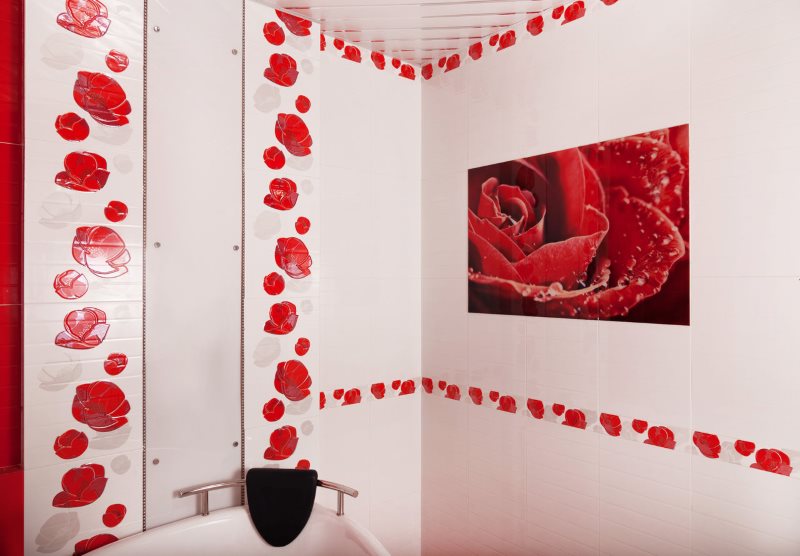
A beautiful ceramic panel of small size will add brightness to the interior of the toilet room
- Equality of colors. There are two or three primary colors in this layout. They are used evenly, but do not mix.
- Kaleidoscope. In other words, creative mess. Tiles of several colors are laid in a chaotic manner. Such interiors charge with positive energy and create a good mood.
- Diagonal masonry. The tile is laid not horizontally, but diagonally. Use elements of a square shape. The installation process is very time-consuming and complex, but the result will satisfy even the most demanding.
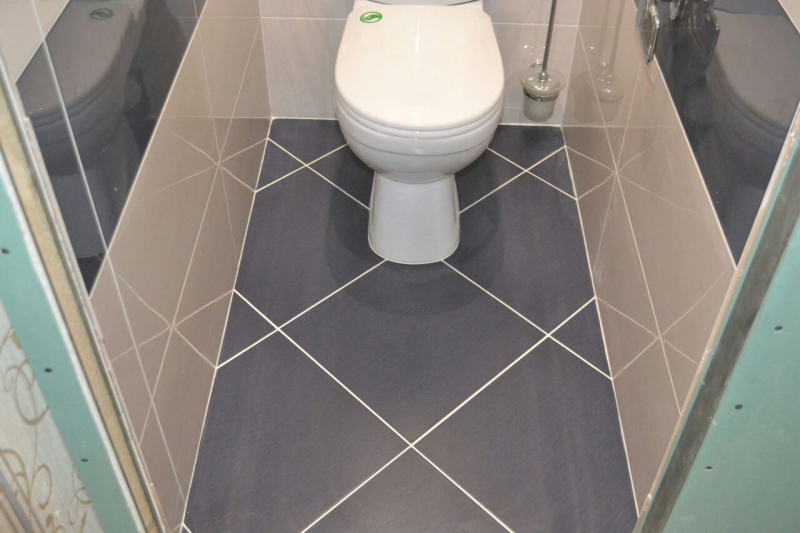
It is better to lay the floor tiles in a small toilet diagonally, thereby visually expanding the area of the room
You can use multiple layouts at the same time. However, you should not conduct such experiments in small rooms.
Color and design solutions
The color of the tile plays an important role in creating a cozy interior in the toilet. The main rule - the smaller the room - the colder the shades. Warm colors make the room visually smaller.

Light shades should prevail in the interior of a small toilet room
For small rooms, the ideal color of the tile can be: cream or white, pale blue or silver, light pink, lilac, emerald.
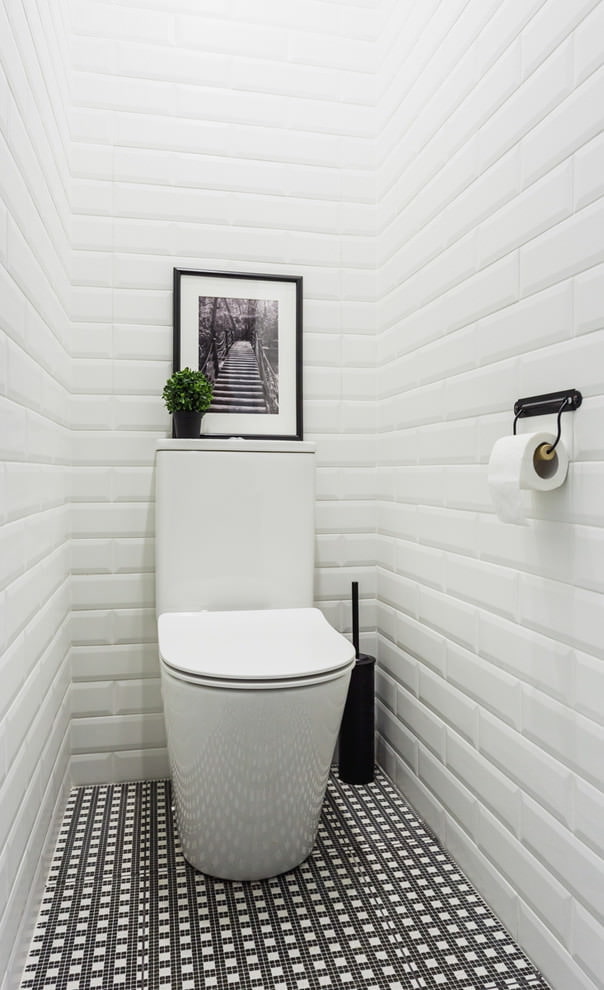
White tile makes the small bathroom lighter and more spacious, which is why it is most often found
Dark shades are good for the floor, but they should not be too bright. The ideal option is brown or gray.
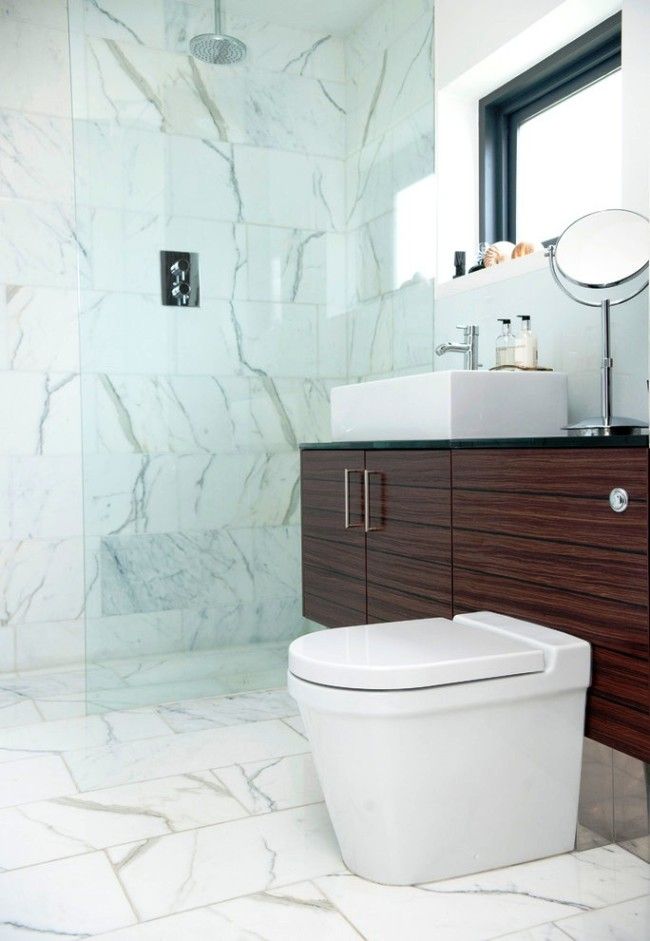
If you put a rectangular tile along the short wall on the floor of a narrow toilet, you can achieve a visual expansion of the room
Tips for choosing the color of floor tiles:
- Bright floors have the ability to visually expand spaces. Used for cramped spaces.
- The main property of dark tiles is to warm. The disadvantage is that the dust and dirt on it is very noticeable.
- Juicy and bright shades attract attention, but in low light can bore.
- For the classic version, natural ceramic colors are suitable, which always remain relevant.
- An interesting option is a pronounced pattern (national motifs, wood-like, etc.).

So that the interior is not boring and monotonous, you can combine several colors
Nuances of the choice of materials
When choosing a tile for the walls of the bathroom, it is important to look at the quality. Tile is the best option. It is strong and resistant to moisture. If the tile is not intended for use in high humidity conditions, then it is better to refuse it.
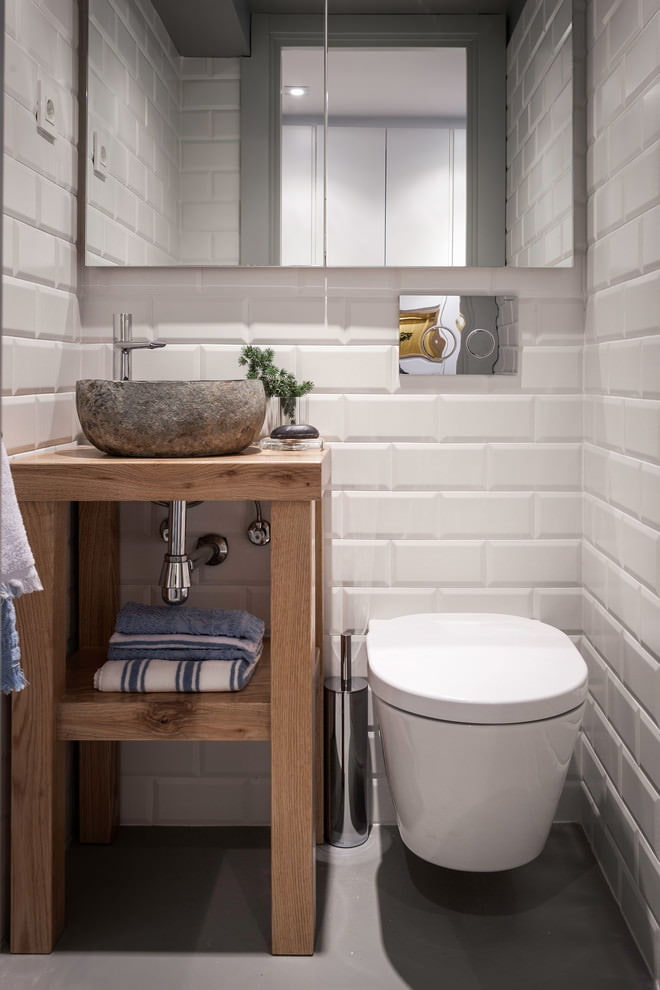
To design a toilet in the popular Scandinavian style, they usually choose a light boar tile that goes well with wooden furniture
When choosing flooring, we pay attention to strength and durability. Stone tile has established itself as one of the best options for the toilet floor. It can withstand heavy loads and will last a long time.
For the ceiling, tiles are usually not used. For such purposes, a special ceiling tile has been created. It has a number of advantages, for use specifically for ceilings. The materials from which it is made, first of all, are light.
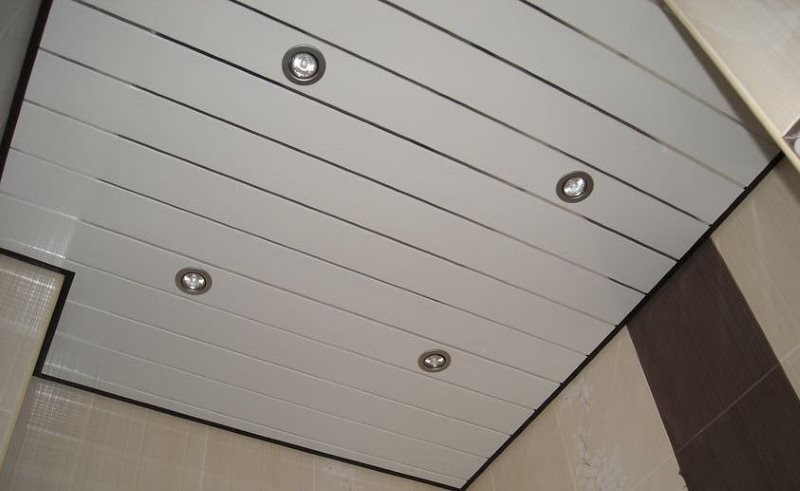
Rack system - a practical and modern solution for finishing the ceiling in the toilet
What type of tile to choose in appearance and characteristics
Criteria to help you choose a tile in the toilet:
- The size of the bathroom is height, length and width.
- The style.
- The location of the plumbing. The choice of tile size and how it is laid depends on this.
- Additional accessories.
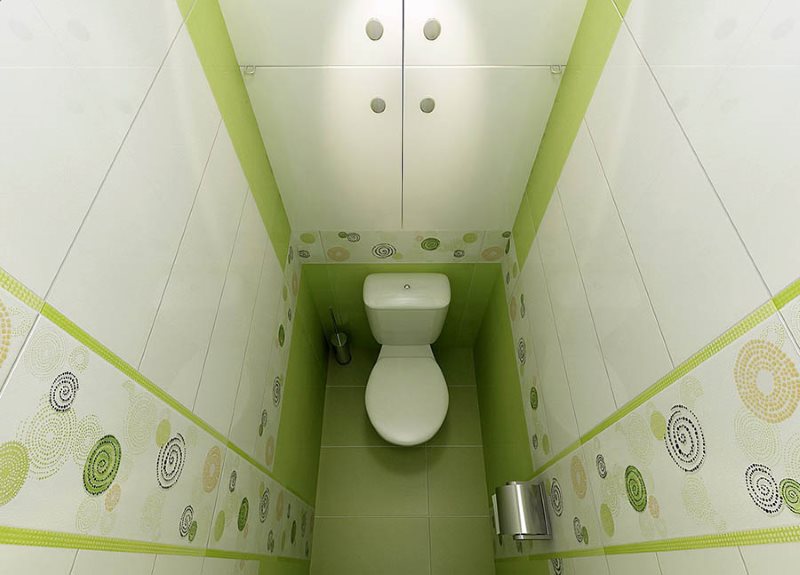
Tiles for walls and floors are significantly different in their characteristics. Floor products are thicker and more durable, wall tiles thinner and smoother
In order for the tile to last for a long time, and its appearance remains unchanged, you should consider such points when buying:
- Plane. The complexity of tile installation depends on this indicator. To check, you should take two tiles and attach them to each other with the front surface. If the tile is of high quality, then the gap will not exceed 1.5 mm.
- Diagonal. It is necessary to measure the diagonal of several tiles at once. It is important that they be the same, with minimal error.
- Glaze. Inspect the surface of the tile, preferably against the light. It should not have small cracks resembling a cobweb.
Each person creates an interior as he wants. Even after using all the recommendations given in the article, it is important that the choice of tiles please you. Your preferences are a very important criterion. Experiment, create your own unique, unique designs. You will succeed!
Video: unusual ideas for a regular bathroom
